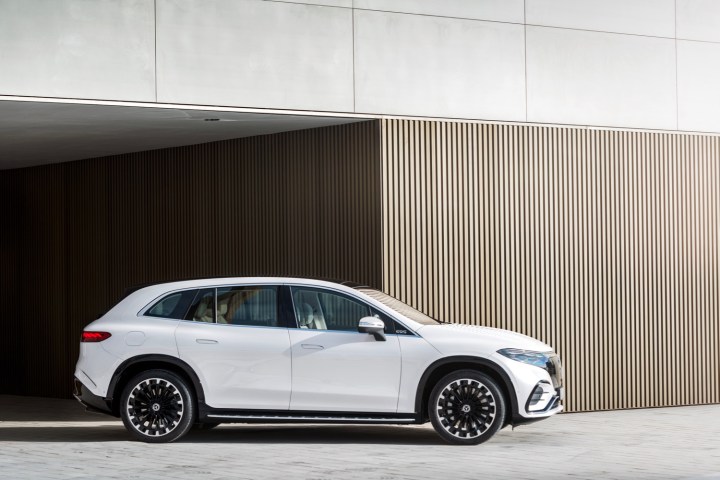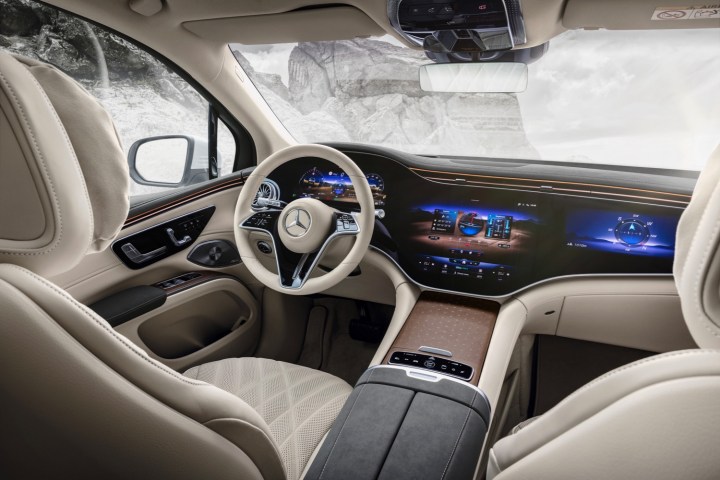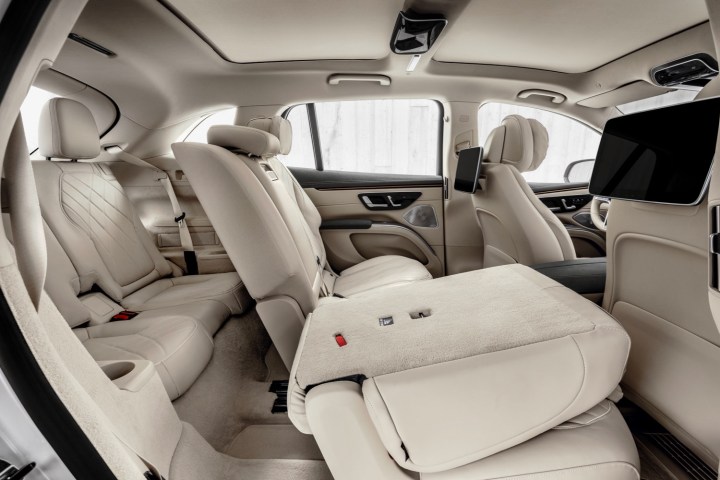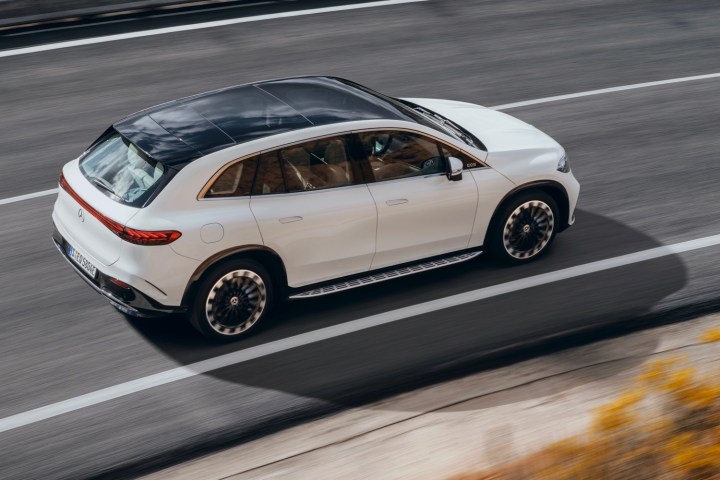Mercedes-Benz is expanding its EQ lineup of electric cars with a new SUV model. As the name suggests, the Mercedes-Benz EQS SUV is based on the same platform as the EQS sedan released last year. The two models also share powertrain hardware, styling, and key tech features — including Mercedes’ 56-inch Hyperscreen display.
The EQS SUV adds a third row of seats (for a total of seven) and the taller ride height and driving position that have made U.S. car shoppers fall in love with SUVs. When it reaches U.S. dealerships later in 2022, it should help boost sales of the EQ line.
Design
The EQS SUV is instantly recognizable as an EQ model thanks to its distinctive grille, headlights, and taillights, as well as smooth surfacing overall. But the SUV has a more upright profile than the EQS sedan. It’s 7.8 inches taller, according to Mercedes’ published measurements, while sharing the sedan’s 126-inch wheelbase.
The EQS sedan has a streamlined shape dictated by aerodynamics, something that wasn’t possible with the SUV version’s form factor. So while Mercedes did give the EQS SUV aerodynamic features like special wheels and tires, underbody paneling, and running boards designed with Formula One racing experience to help direct air around the vehicle, the SUV can’t cheat the wind like its sedan counterpart.
The interior aims for the same level of luxury as the EQS sedan, boasting cushy leather seats with headrest pillows and 64-color ambient lighting. Mercedes will offer the EQS SUV in two-row, five-seat, or three-row, seven-seat configurations, helping it live up to the “utility” component of its name. And second-row passengers will likely have a bit more space than in the EQS sedan, where headroom is compromised by the sloping roof.
Tech
The optional Hyperscreen display is unchanged from the EQS sedan, meaning customers get a 12.3-inch instrument cluster, 17.7-inch central touchscreen, and 12.3-inch front-passenger touchscreen under one piece of glass. Base models get the 12.3-inch instrument cluster and a 12.8-inch portrait-oriented central touchscreen.
Natural-language voice recognition is standard and as is the case with the EQS sedan, we expect wireless Apple CarPlay and Android Auto to be included as well. The options list includes a rear-seat entertainment system with a pair of 11.6-inch screens and a 15-speaker Burmester audio system with Dolby Atmos surround sound.
Standard driver-assist tech includes adaptive cruise control with stop-and-go and speed-limit adaptation, automatic emergency braking, lane keep assist, lane change assist, and an automated parking function.
Specifications
EQS SUV variants mirror the EQS sedan. The base EQS 450+ has rear-wheel drive and a single motor producing 355 horsepower and 429 pound-feet of torque. The dual-motor all-wheel drive EQS 580 produces 536 hp and 633 lb-ft of torque.
Mercedes hasn’t published Environmental Protection Agency range estimates, but is aiming for up to 372 miles on the more optimistic European WLTP testing cycle. The automaker did say that a 10% to 80% charge can be accomplished in 31 minutes with DC fast charging at 110 kilowatts. Using a 240-volt AC charger, a 10% to 100% charge takes a claimed 11.25 hours.
Rivals
Pricing for the EQS SUV won’t be released until closer to its launch, so we don’t know how it will stack up against other electric luxury SUVs. The Audi E-Tron and Jaguar I-Pace are somewhat smaller two-row models, while the Tesla Model X focuses on theatrics with its funky “Falcon” doors. The Rivian R1S boasts genuine off-road capability, but hasn’t started shipping to customers yet.
With the EQS sedan and SUV positioned at the top of the lineup, Mercedes will now focus on less-expensive models. A smaller EQE sedan and SUV are on the way, along with an EQB compact SUV. Mercedes plans to go all-electric in at least some markets by 2030.
Editors’ Recommendations








